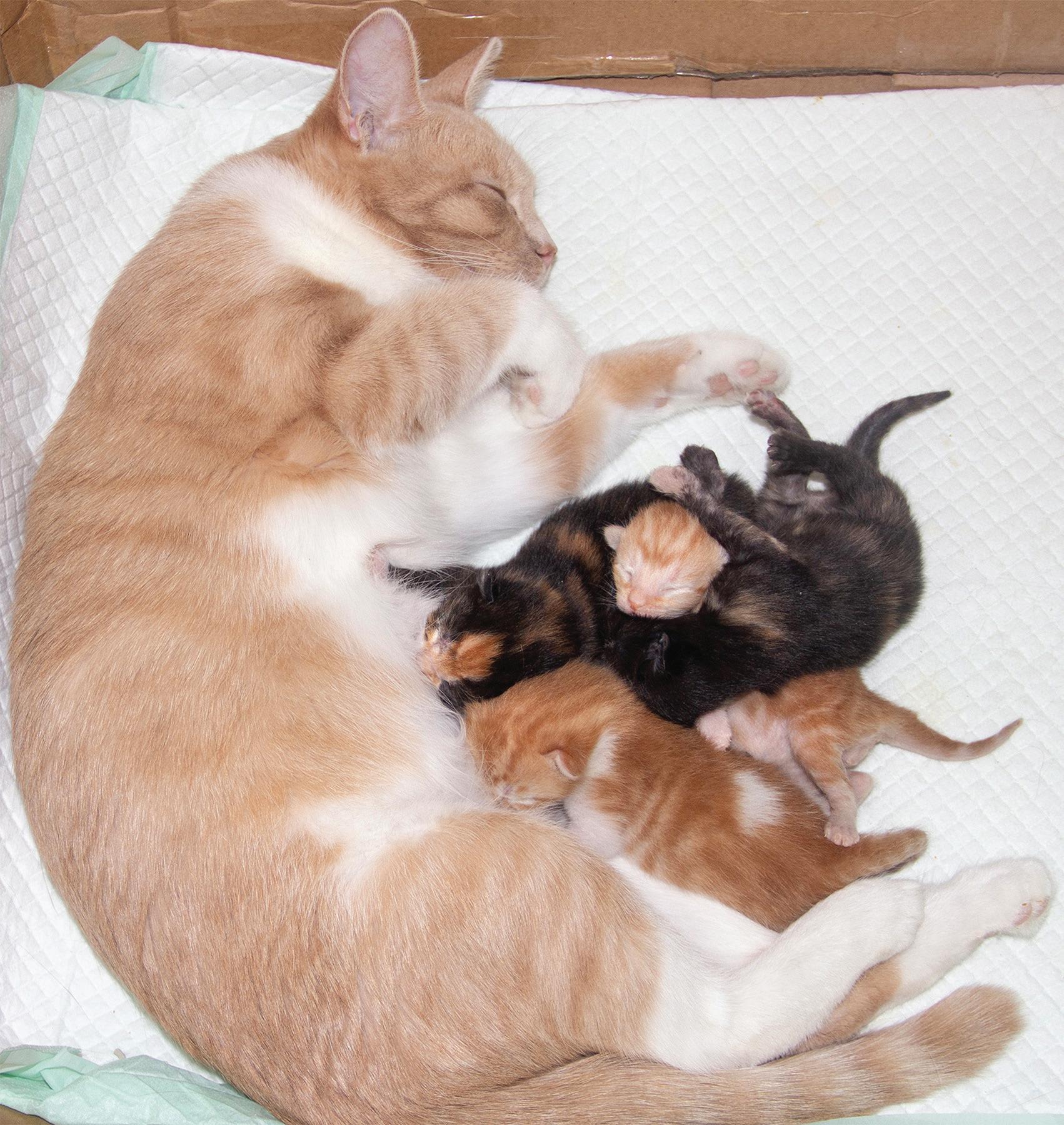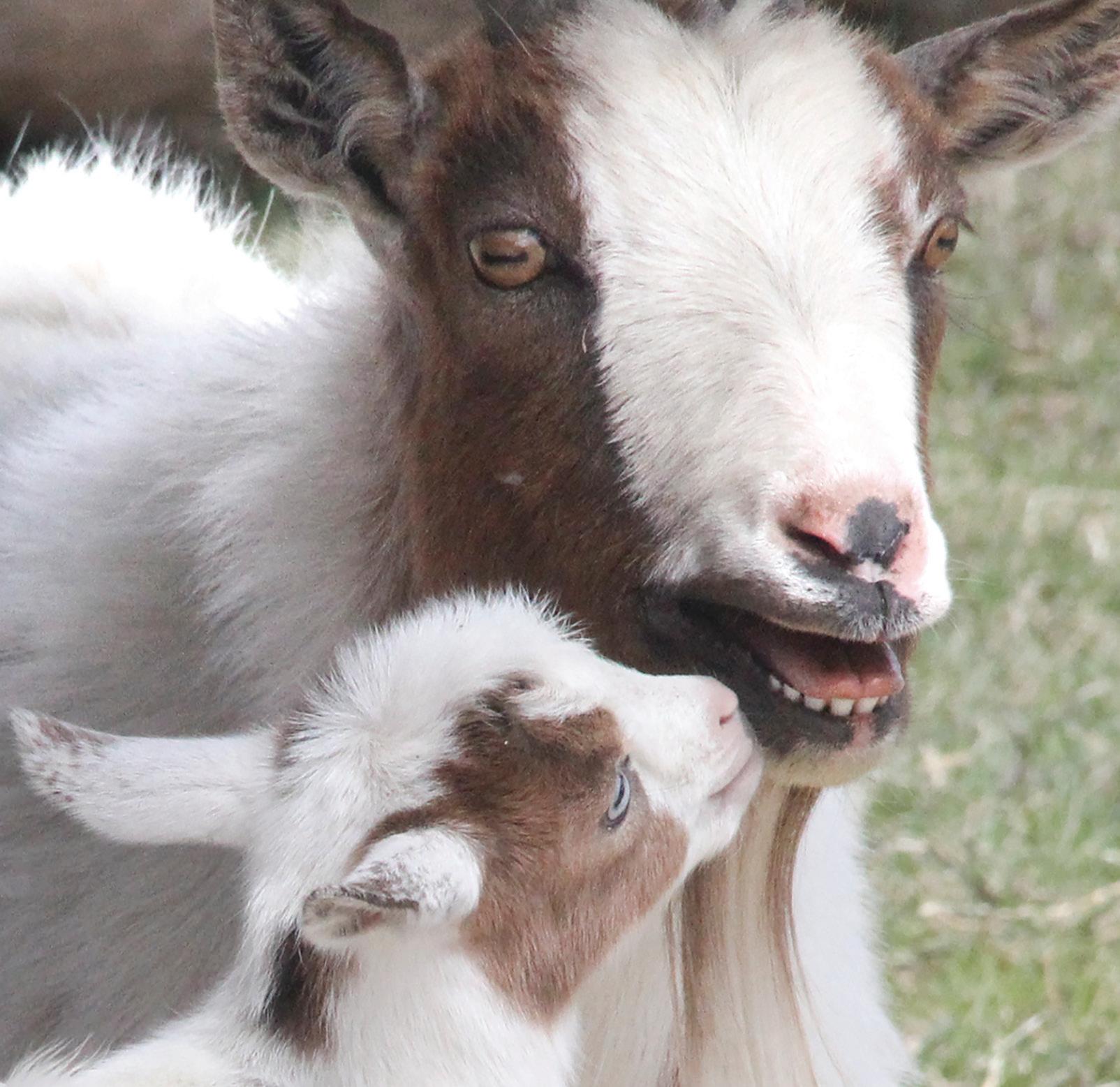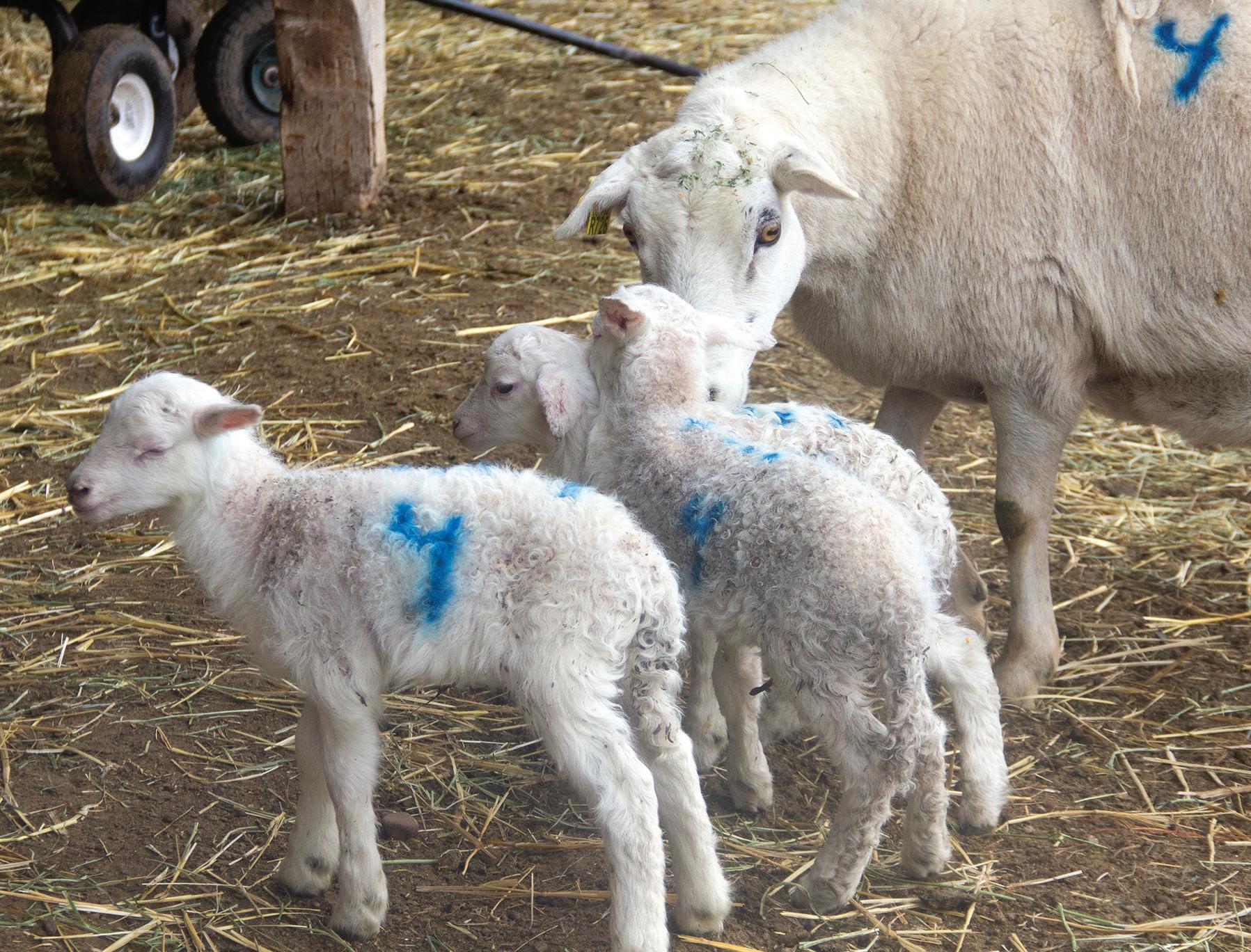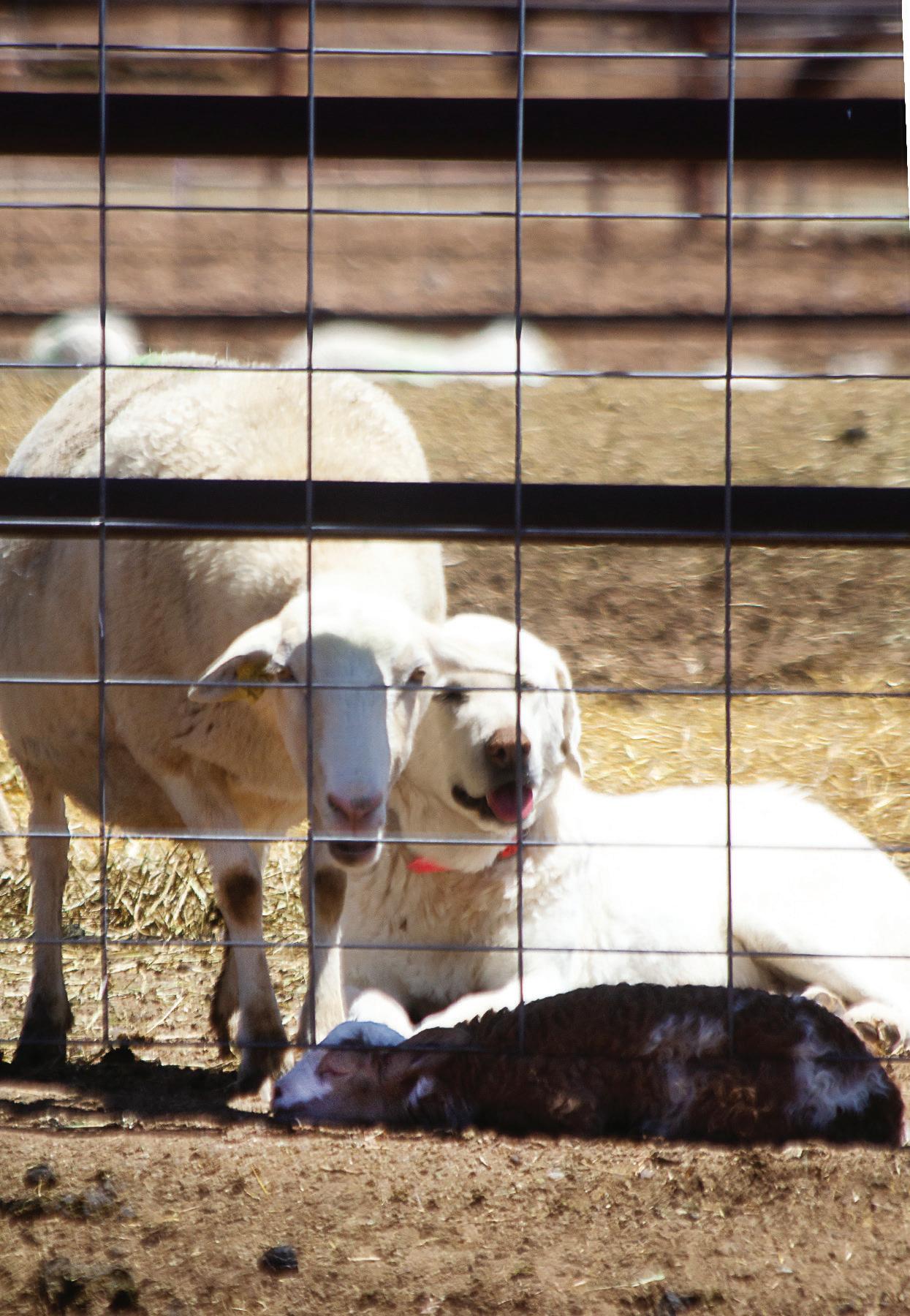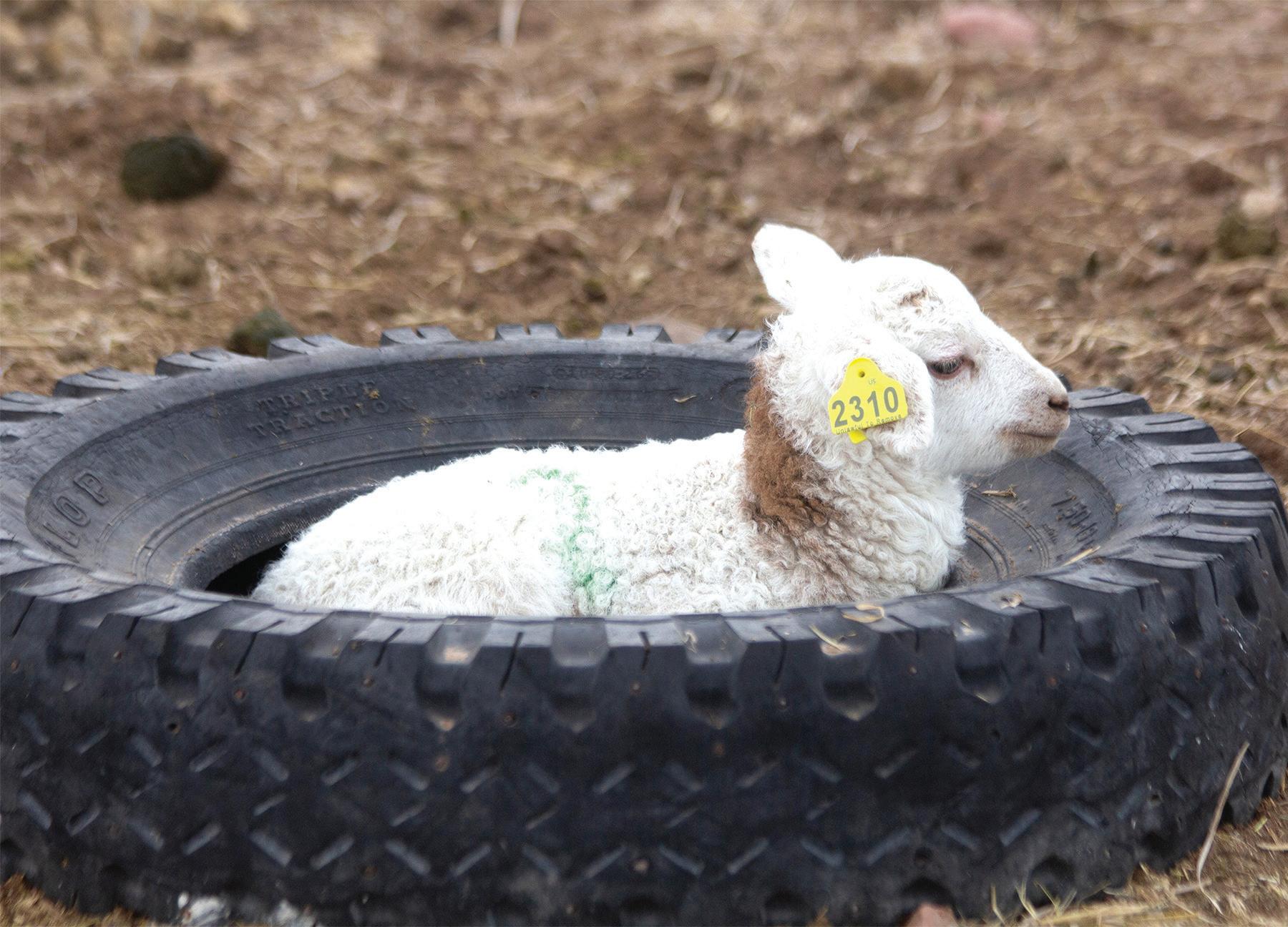
About the Local Animals Seen




We’re excited to announce that The Animal, aka Animal Writes, has finally awakened after a long hibernation.
Animal Writes has teamed up with the Sopris Sun to bring you this inaugural issue which we hope spreads joy and brings smiles to the faces of animal lovers from the Roaring Fork Valley to Rifle.
The Animal Writes staff wants to thank you, the reader, for picking up the Sopris Sun and Animal Writes. We also thank our advertisers for their support, the Sopris Sun staff plus all the people and animals we interviewed. A special thanks to Liz Kremzier, MS, DVM, CVA, for contributing a valuable column about pet nutrition. In addition to being inserted into the March 21st Sopris Sun, Animal Writes will occupy several dedicated Animal Writes newspaper boxes and will be distributed throughout the spring.
The Roaring Fork Valley is home to a diverse menagerie of animals and their humans. Because Animal Writes covers the local animal scene, if you have any story ideas, photos or animal news, please email us at animalwrites@soprissun.com. We also encourage you to participate in our contest, details on page 5.
With your help we intend to come out quarterly as an insert in the Sopris Sun.
Thanks again!
Jane and Alyssa
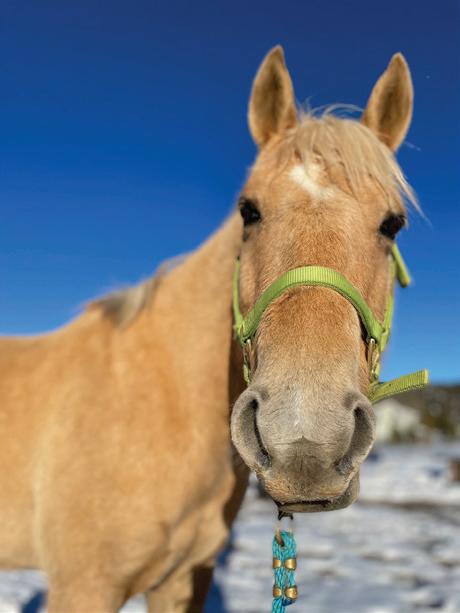
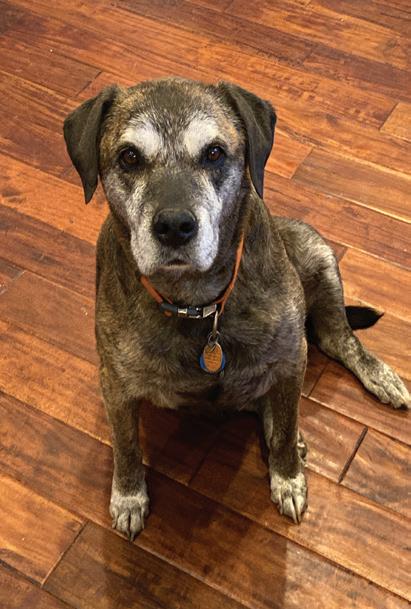









When Maple was adopted and left Colorado Animal Rescue for her new home, she wasn’t the same dog as when she arrived. The one and a halfyear-old Mastiff mix looked the same, but her body language was different. She appeared to be more confident.
Maple is one of many dogs who arrive at C.A.R.E. with behavioral issues. Dogs end up at the shelter for any number of reasons. Maybe a dog escaped from his owner’s yard, was abandoned or mistreated, or simply unwanted. Unfortunately, the most common reason is due to owners having to surrender their dog or cat out of necessity. Housing issues come up and people must move to a new home or apartment where pets are not allowed. That separation can be traumatic for both dog and owner. Whatever the circumstances, the dog has been affected, and it shows up in his/her behavior.
When it comes to assessing and dealing with canine behavioral issues at C.A.R.E, the top dog is Canine Behavior Manager Noah Baskin. Noah’s “bark” is kind and gentle when he works with dogs. He has held the position since 2020, and Noah loves doing something that matters. “I like when my actions matter. When my decisions have consequences,” he said. “This combines getting to be around dogs and any of the animals all day. I love it when I just walk down the hallways and I get to also be around the cats.”
To determine what their needs are, Noah goes through the same process with every dog that comes into the shelter. He assesses each dog using the same basic behavior evaluation that gives him information about a dog’s personality, an idea of what their issues are and what they need to work on. He figures out if the dog is confident, afraid, aggressive or shy, and evaluates how they behave around kids, cats and other dogs. “I really like winning over the shy dogs, that’s one of my favorite parts here. When a dog that won’t let me anywhere near it at first… after I build his trust and he learns to be comfortable, he’ll allow me to get close,” Noah said.
According to Noah, “Every dog is different. Some dogs don’t need anything, some need a few days of work, others a few weeks of work and there

are other dogs that need three months or even more. The bottom line is that I want to be confident that the dog is going to be safe in the situation I’m going to put him in. I don’t want there to be any surprises,” he said. “Is the dog OK around children, what is the dog is comfortable and uncomfortable with, what kind of home would be best for each dog.”

Noah goes through a similar process when it comes to potential adopters. “I want to give them an accurate idea of what it’s going to be like to live with a particular dog,” he said. He talks with every individual or family interested in adopting, learns what their lifestyle is like, then figures out which dog might be a good fit for them, and if that family will be a good fit for the dog.
“One thing I really like about C.A.R.E. is that if it doesn’t work out, we will always take a dog back. I like to let people know that their dog has a safe place to land whether it’s a week after adoption or 10 years. A lot of shelters won’t do that.”
Depending on what the issue or issues are, Noah creates a training plan for each animal, and at that point he engages Luke Barta, the Assistant Canine Behavior Manager, then they both work with the dogs. Noah and Luke discuss the plan and together they figure out a training schedule for each animal. “Luke basically does everything that I do with the dog. He also lets the dogs out, cleans and feeds. Essentially, he is me on days I’m not here. Luke’s been here for 3 1/2 years and he could take over my job if I leave.”
At this point in the evaluation the actual training begins, and both Noah and Luke work with each dog until they’re confident the dog is ready for adoption. The training doesn’t necessarily end there, but the dog has been rehabbed to the point where they are confident that both the dog and the family will be happy and safe together. Once a dog is adopted, they continue to be available to talk with and help every individual and family who has adopted a dog. “The number one priority is human safety and dog safety.”
Noah Baskin is dedicated and obviously loves what he does. “What’s going on around the world is just too much to tackle, but I can do my best making my little corner of the world the best it can be, even if that means helping out little doggies …”
Top: Noah takes a moment to praise Trix, one of the shelter dogs he’s been working with at C.A.R.E. Left: The laundry room at C.A.R.E. is also a quiet place to work with some of the dogs who aren’t quite ready to train outside, or, on cold snowy days. It’s obvious that Jessie enjoys being scratched behind her ears.
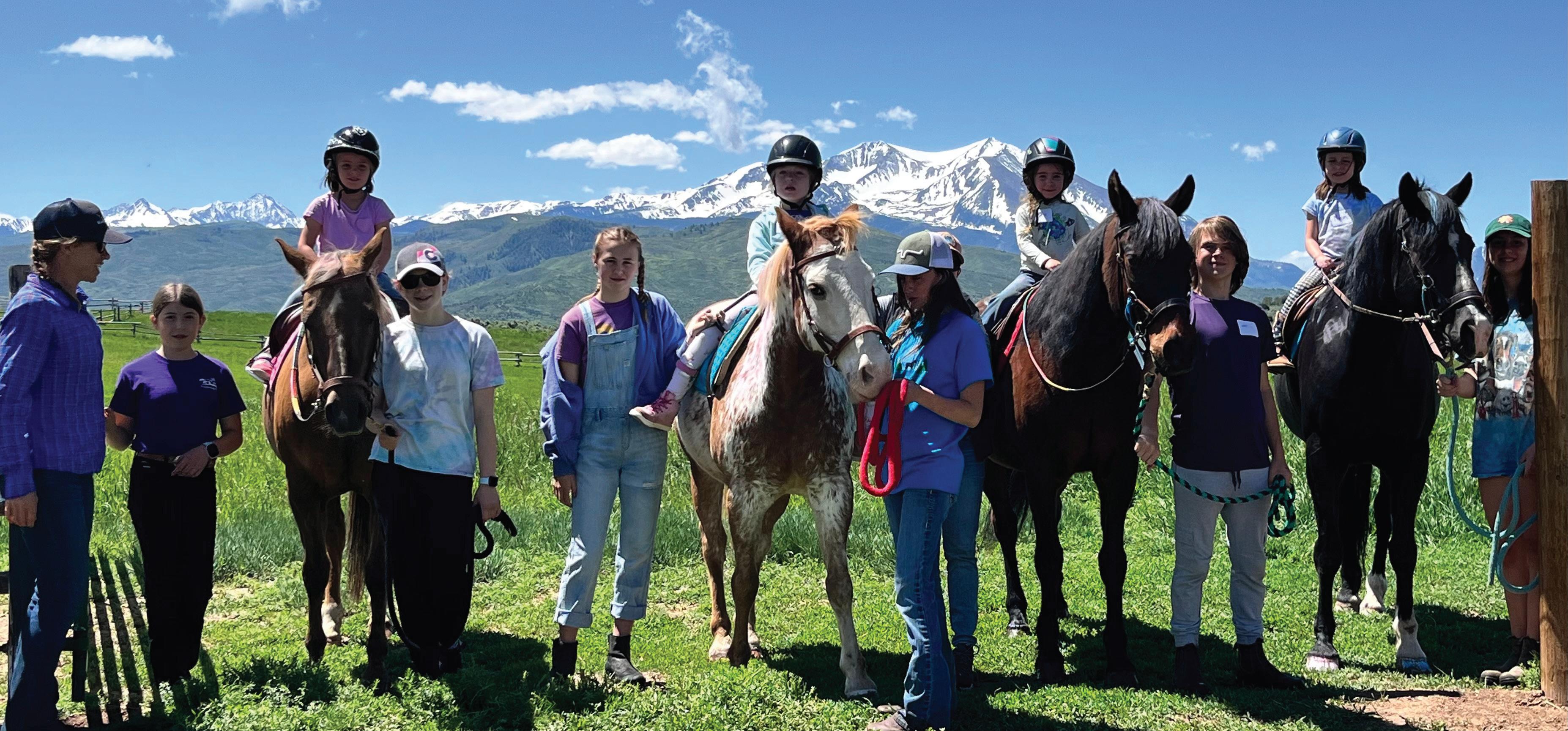
Everyday, WindWalkers helps individuals and their families with challenges to grow and thrive despite the hardships they may be facing emotionally, physically, cognitively.
We all know someone who is facing a challenge or we may now have some of our own. Some are easy to see while others remain hidden, yet are often more profound.




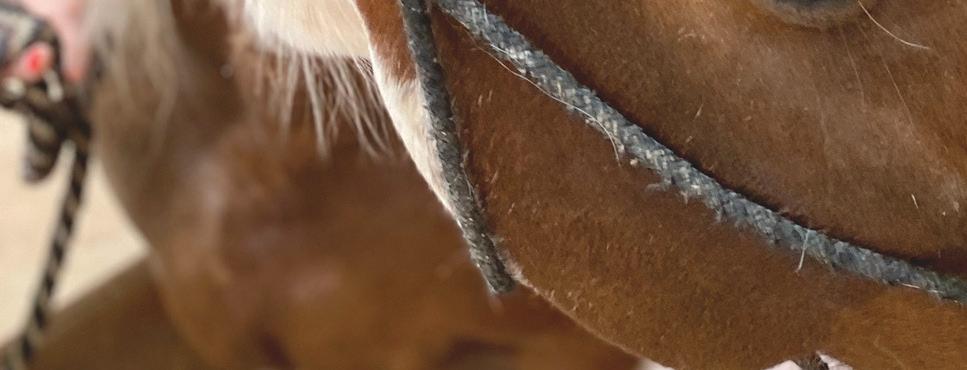
"I love to hug my horse!"
"I love to hug my horse!"

Therapeutic riding benefits in the areas of health, education, mental health, and physical skills. Throughout our community, we have aided thousands of individuals with extraordinary abilities, as we say, who experience the rewarding benefits of WindWalkers programs. One's challenge does not have to limit them from participating in equine therapies. In fact, experiencing the motion and bond with the horse can be very therapeutic.
Benefits include:
improvement in self sufficency balance and muscle strength improved mobility reduced anxiety
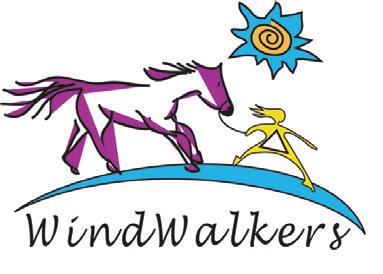

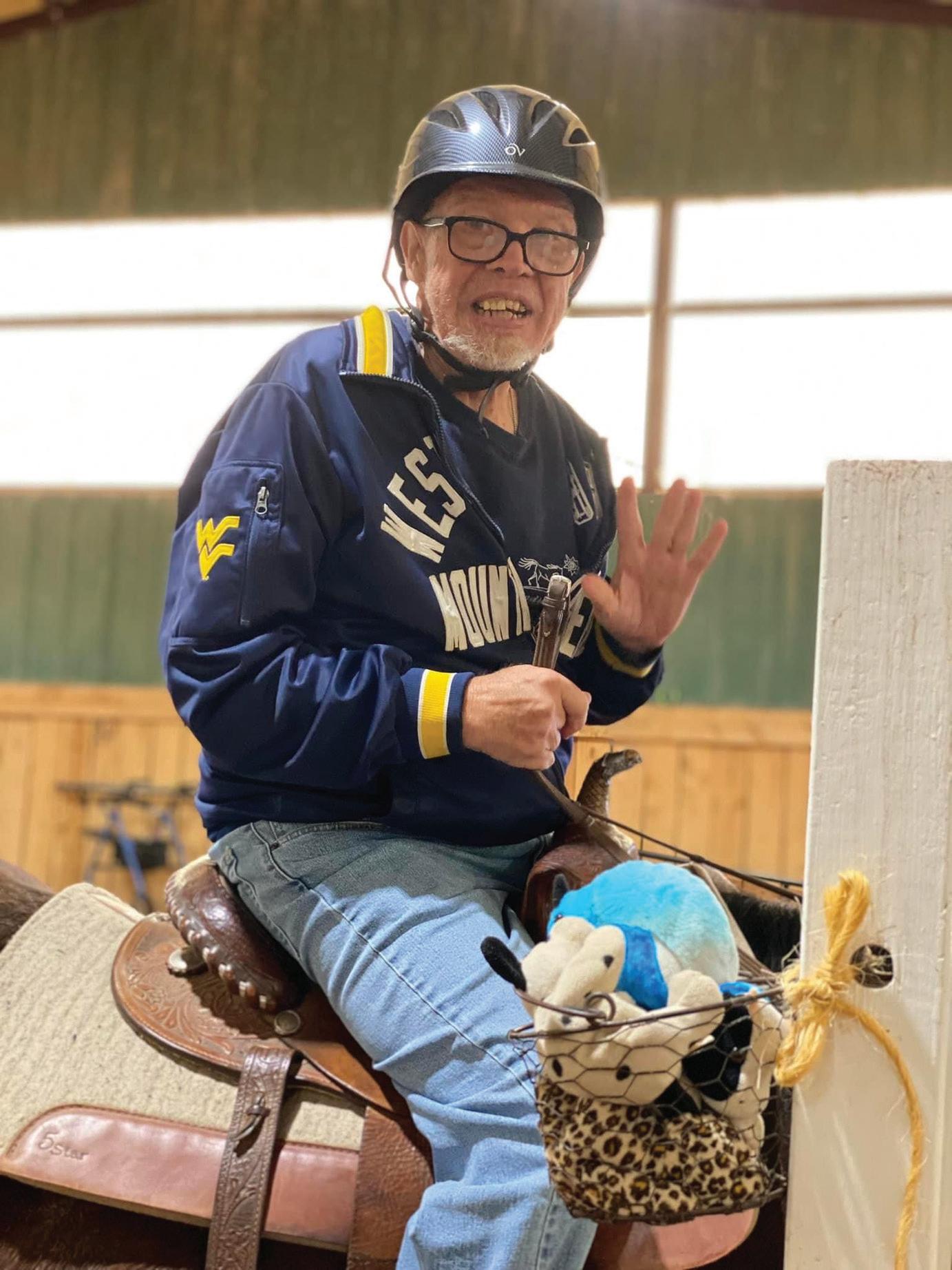
“Riding “Riding horses horses makes me makes me smile!” smile!”
PO Box 504 Carbondale, CO 81623
WindWalkers.org/donate
970.963.2909

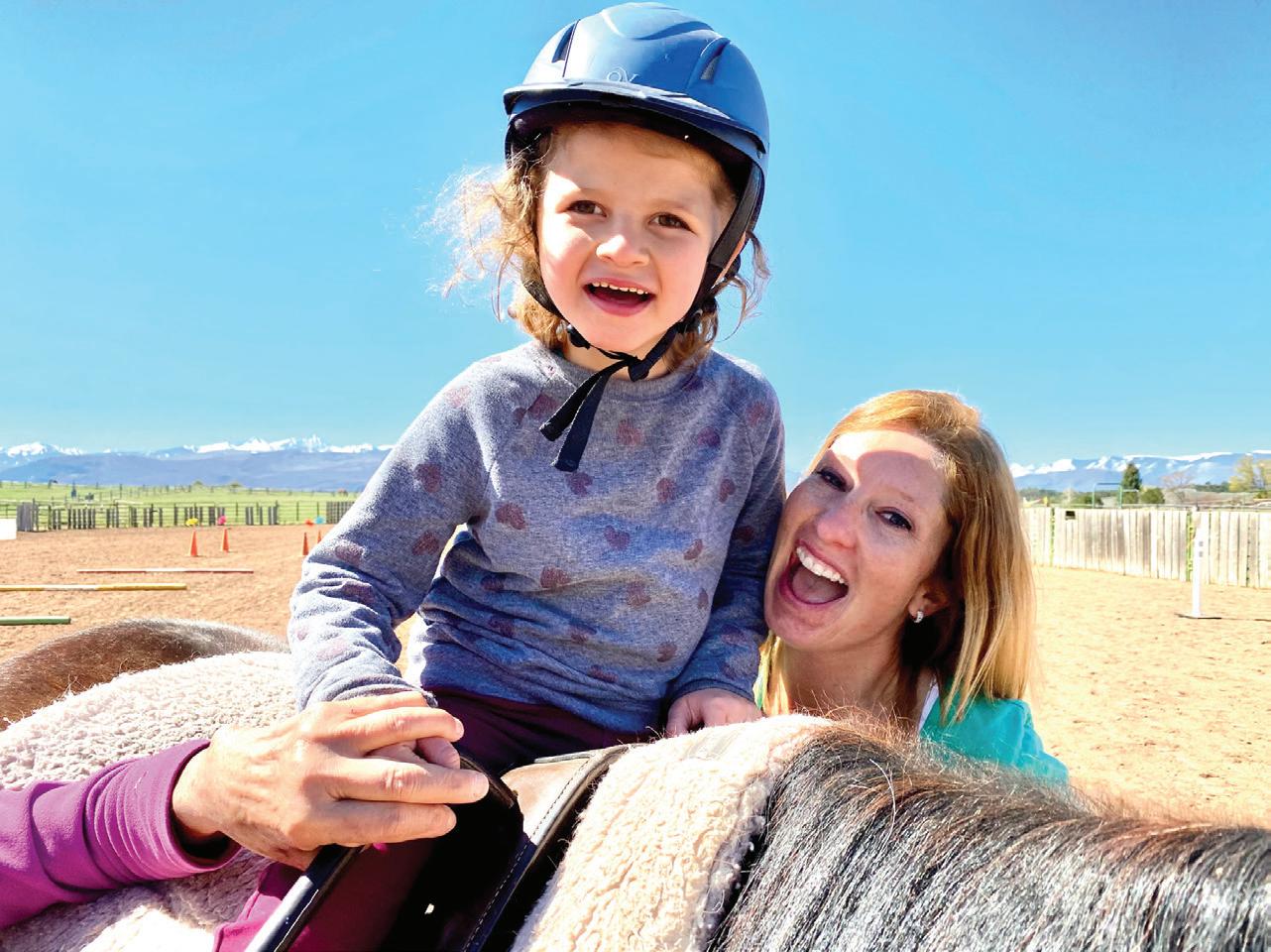
We frequently observe that horses reflect human emotions through their non-verbal cues, effectively mirroring the energy, emotion, and intentions of the individual. This mirroring process offers clients valuable insights into their own emotional states, highlighting patterns and behaviors that could be obstructing their journey towards finding viable solutions. Experiential learning, in particular, proves to be a powerful tool in facilitating breakthroughs.
Sponsored by


Let’s face it, we all love our animals and each one of us believes that our animal is the cutest, prettiest, smartest, funniest, and most awesome animal on the planet. Animal Writes wants to get up-close with your animal’s face to find out which animal it actually is. We want to make it official so that the winner will have authorized bragging rights!
Every face tells a story. Most faces express an opinion. Some are easy to read, and others are not. Some faces are so unique, expressive or captivating that they immediately draw you in. This is the face we’re looking for. It’s the face that immediately captures our attention and the face that
will win first place in “THE FACE-OFF.” Please include the animal’s name and a sentence or two about him or her. You don’t have to be a photographer to capture a momentous moment!
Entry information:
Photo entries should be emailed to animalwrites@soprissun.com
Include “Face-Off” on the email subject line.
Include your name and contact information.
Submit only one photo per entry.
Humans can enter more than one animal, however only one entry per animal.
All animal species, other than humans, are eligible.
Entry deadline: May 1, 2024!
Prizes: The winner and two runners up will be featured in the next edition of Animal Writes and the winning Animal will receive a unique prize!
Animal Writes will have a panel of judges to determine first, second and third place winners. The judging criteria is based on the image that immediately captures their attention. Whiskey, the dog pictured here, is an example of what we’re looking for. The close-up of his unique face immediately draws you in. Your entry can be funny, silly, adorable, different, beautiful, ugly, etc., but above all, it makes us look.
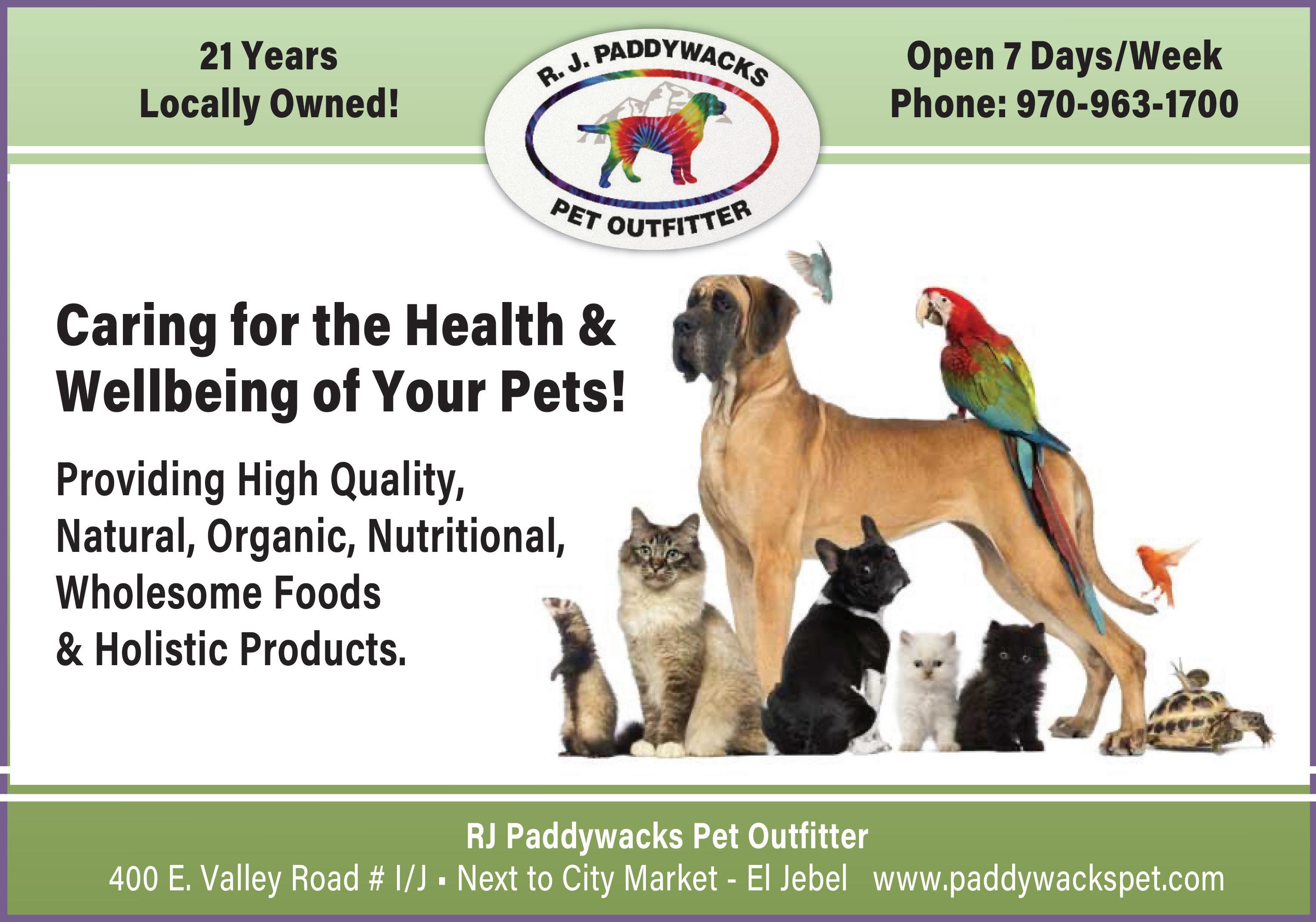
I happened to stop by the Vickers home as three family members were about to treat one of their chickens who was limping around the yard, obviously in pain. The entire sequence that followed was so entertaining it looked and felt like a scene out of a movie. In an attempt to give you a similar experience, this story appears in “screenplay-like” format.
Welcome to the Vickers’ home, located outside the town of Carbondale. Carrie the mom is preparing to perform a simple yet necessary surgical procedure on Jewel, one of their chickens. Eleven-year-old identical-twin sisters Rae and Tillie are assisting. Matt the dad and 13-year-old sister Genevieve are not present. Finch the dog, Goldie the cat and Squirt the lizard are also not around.
Caring for so many animals is a lot of work, so it becomes a family affair where every human family-member pitches in. The Vickers are involved in multiple extracurricular or after-school activities, so it’s especially important and necessary for everyone to pitch in.
However, when an animal is hurting or has a minor injury, those medical issues all fall to Carrie, who comes from an animal-loving family.
“My grandparents basically had a zoo, and I had a horse and goats when I was a kid,” she said. She also worked at Alpine, Carbondale and Aspen animal hospitals over the years, where she gathered enough knowledge to perform some basic medical procedures on animals, including wound care. “I can do minor stuff,” she explained.
Poor Jewel. The golden laced Wyandotte hen was hurting and at an obvious disadvantage as she limped around the large yard in search of leftover breakfast scraps. The competition was fierce. Jewel was up against the goats (Syd and Bean), Apache the horse and the other chickens in her flock including Dolly Parton, Sunny, Wild, Hans of the Seven Isles and Penguin. They too were combing the area for yummy treats consisting of raw fruits and veggies, grain, and mealworms.
A sliding glass door opens unexpectedly, and we see Carrie enter the yard. She gently picks up Jewel and carries her into the house.
Carrie holds Jewel as she moves through the dining room, passing a table that resembles a modest surgical area. Rae and Tillie stand next to the table watching Carrie and Jewel as they enter the bathroom.
The sink is filled with water and Epsom salts. Carrie sets Jewel into the sink, gently bracing her while the hen furiously flaps her wings. Jewel quickly settles down and it appears that she’s enjoying the soak. The twins enter the bathroom. “It’s bumblefoot. Let’s just let her soak for a while so it softens the foot and it will be easier to remove,” Carrie said.
Carrie explains that bumblefoot is hardened pus called a “plug,” which she will remove. The girls appear relaxed as they observe Jewel soaking quietly. A few minutes later Carrie returns to the bathroom, lifts Jewel from the sink and wraps her in a towel. They all exit.
Carrie, Jewel, Tillie, and Rae enter the dining area. Carrie settles into a chair, still holding Jewel. The sisters stand next to them as Carrie closely examines Jewel’s right foot. The procedure is about to begin.
“After we remove the plug, we’ll treat for the infection. They heal well. Chickens are durable and this is manageable, but you have to be comfortable digging into a chicken’s foot.”
In our screenplay, the camera moves in for a close-up as the procedure is about to start. Carrie picks up a sterilized pocketknife and digs into Jewel’s foot, while her surgical assistants stand by. “Operation Bumblefoot” begins.
Editor’s note: We obviously can’t share a video of the procedure, but we can share photos. We hope to give you a visual taste of what it’s like being present in the Vickers O.R., as Carrie, Tillie, and Rae perform “Operation Bumblefoot”.

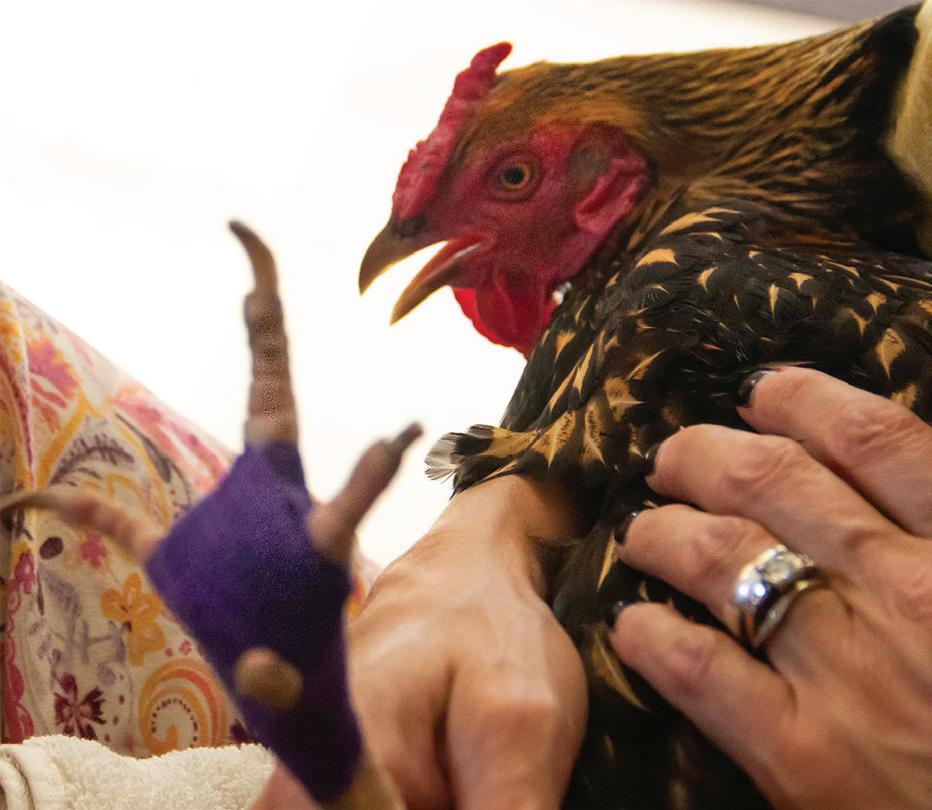
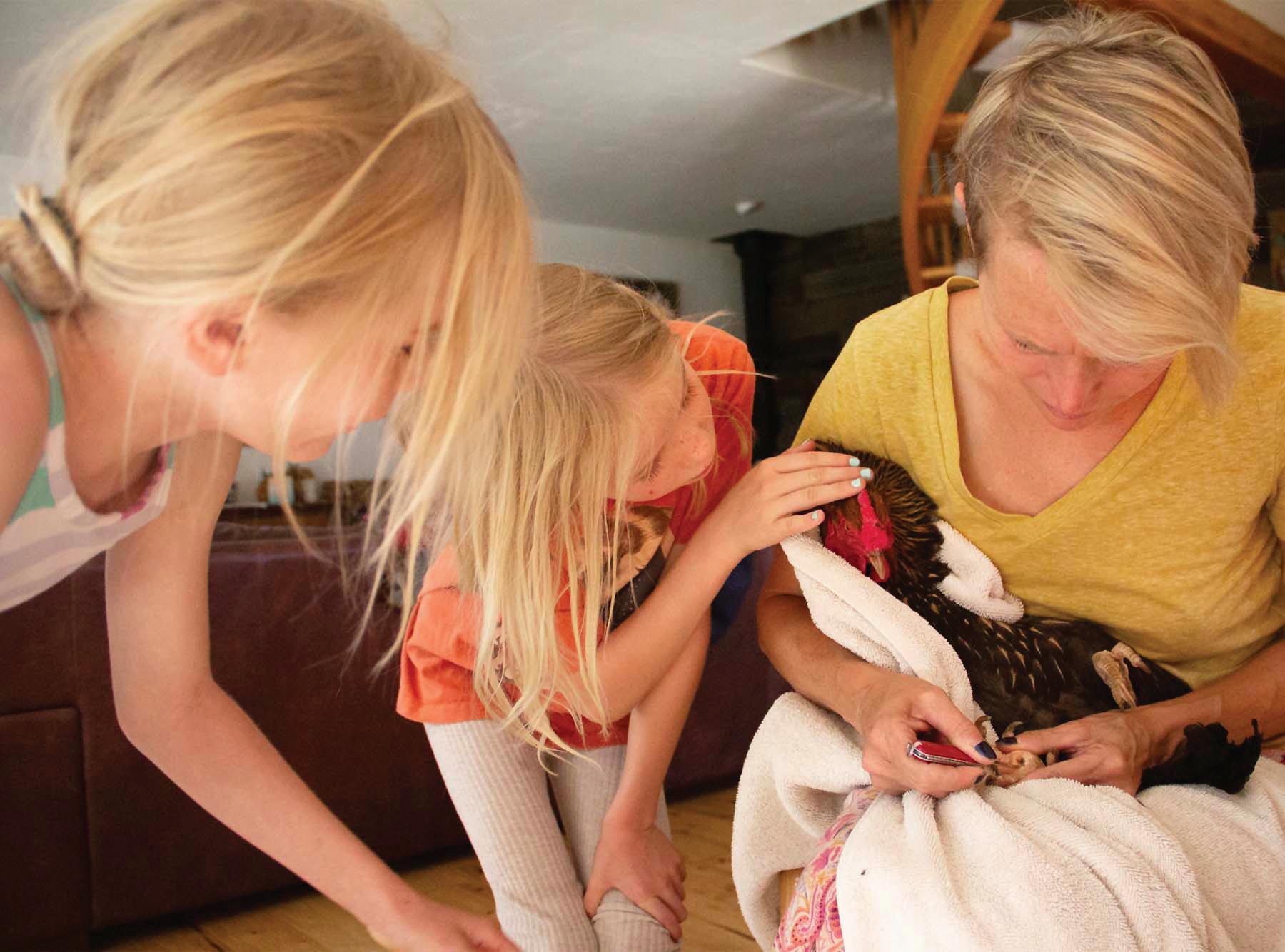
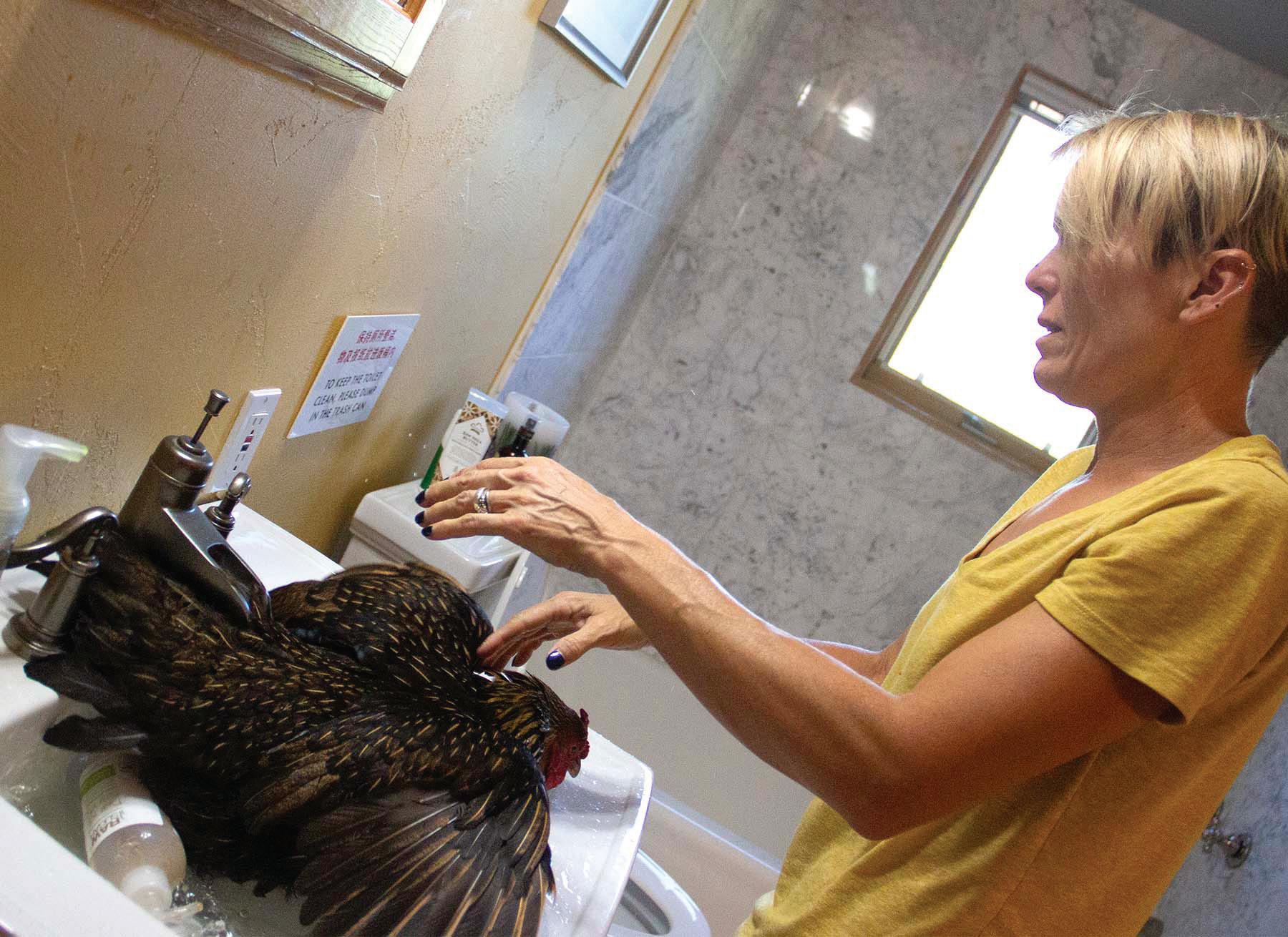
FYI, the operation was a success and Jewel returned to her flock with barely a limp and appearing to be showing off the pretty purple vet wrap covering and protecting her incision.
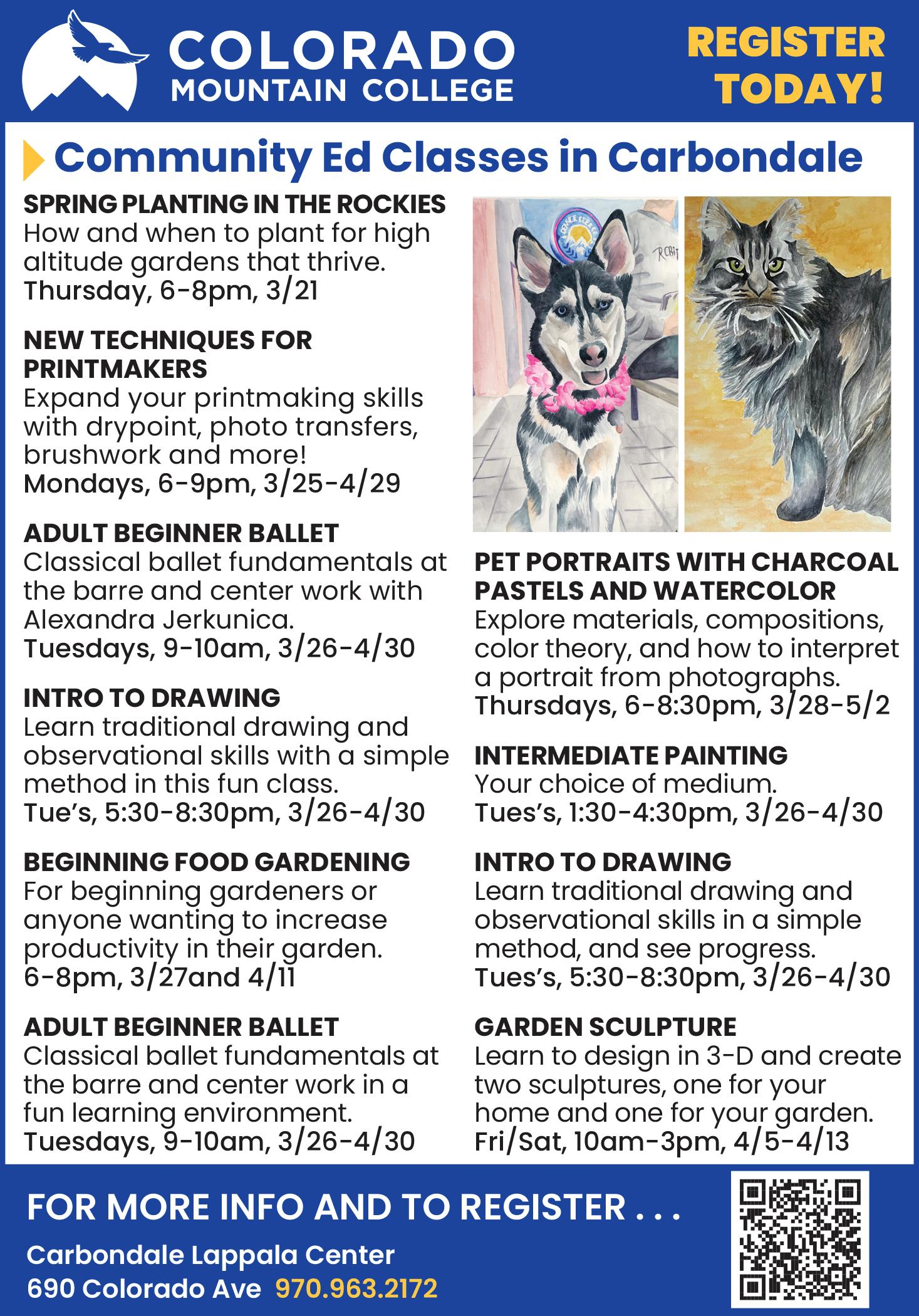

If you have ever been inside Downtown Drug and Pharmacy in Glenwood Springs, you already know the secret.
The business is a drugstore, pharmacy and gift shop, so it’s a perfect name for what it is. As for the gifts they carry, most are local or one-ofa-kind, including handmade jewelry, clothing and more.
However, chances are you might not know about the treasures it holds for animal and pet lovers unless you have been inside, and that’s the secret.
We all know about and love R.J. Paddywacks because it’s a shopping “destination” for animal lovers. It caters to us. Because Animal Writes also caters to local pet and animal lovers, we feel obligated to let you know that Downtown Drug and Pharmacy also has a unique and fun selection of toys, treats, games, water bottles, socks and more for pets and humans that love their pets, especially their dogs and kitties.
According to owner/pharmacist Jason Gotzinger, the previous owners of the drugstore, Margie and Pete Crow, loved animals and started stocking unique animal gifts. When Jason and his wife Amanda bought the business, they wanted to carry on the tradition. If you check it out, we think you’ll agree that they’ve done a great job!


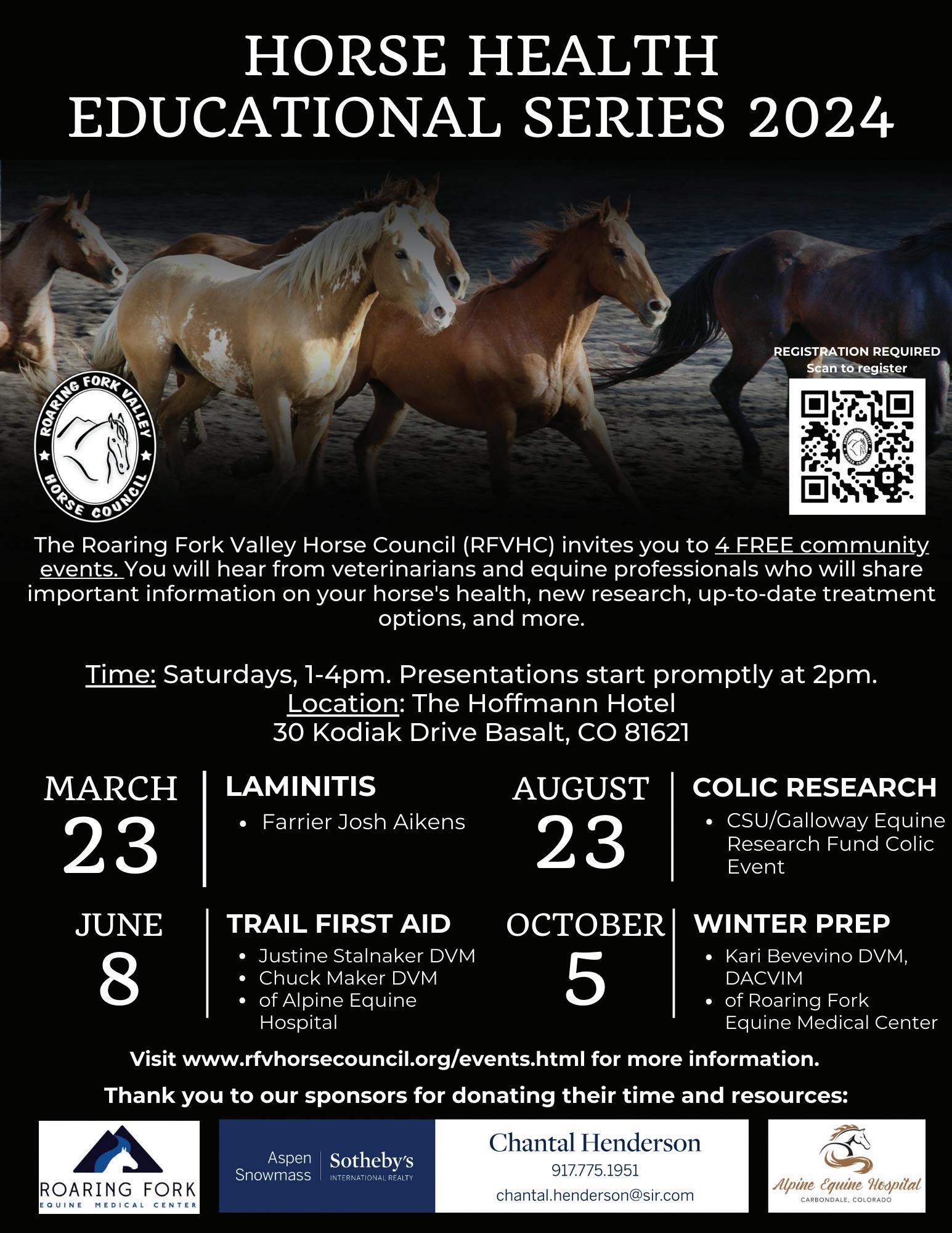
Rumors are circulating that there’s an increase in the donkey population here in the Roaring Fork Valley, including evidence of more donkeys popping up and populating pastures from here to Rifle.
Most people around the world see donkeys as working animals or pack animals and they have been for thousands of years, especially in impoverished or underdeveloped countries. It’s obvious that there are plenty of folks around here who see them differently, including three women we spoke to who have each rescued donkeys. Besides being cute and having long fuzzy ears, we were curious about what it is about donkeys that has captured their hearts. It’s interesting that all three women, who don’t know one another, mentioned many of the same qualities and had similar comparisons.
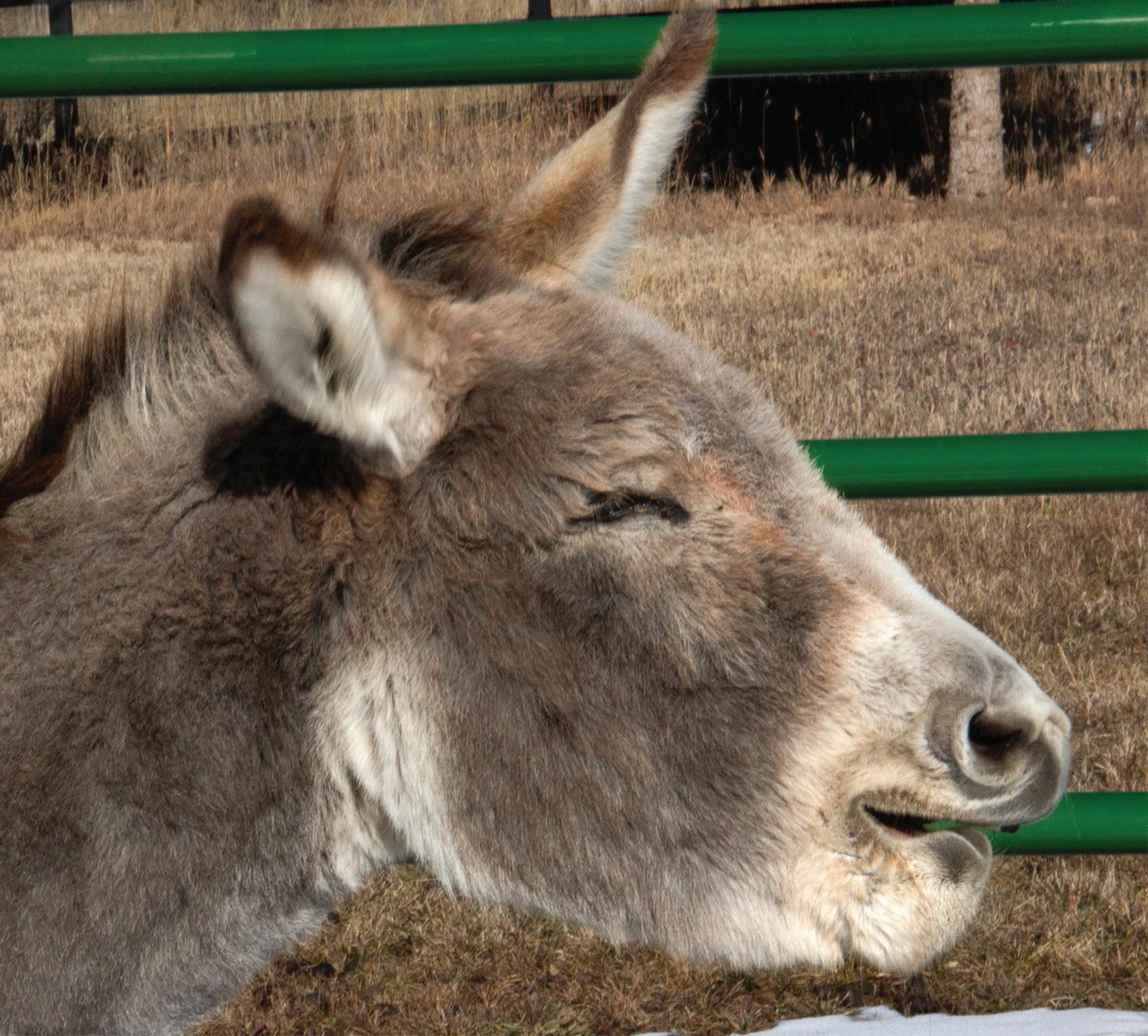
Natascha Hildebrandt has lived in the valley for five years and her home is in El Jebel. She’s an artist, has a dog named Lola and two cats. Natascha once had a guinea pig named Miss Piggy, and she loves animals. She said that when she was a child, she loved a book she read about donkeys, and when she grew up and learned about donkeys as “the ultimate underdog” the more attracted she was.
That’s why she eventually checked out a donkey rescue in Bennett, Colorado and later, a rescue in in Kiowa. About 1 ½ years ago Natascha adopted her first two donkeys, Hugo and Daphne, and last April she adopted Greta. “They’re smart, affectionate, cute and playful, and the fact that others don’t want them makes me want them more,” she said.
Natascha’s theory is that people don’t want them because they bray and over-graze. “But they’re like big dogs and they curl up like Great Danes. They’re the cats of the equine world because they’re not all over you,”

she said. “Dogs have owners and cats have staff,” she quipped. When asked if she wants to rescue more donkeys Natascha replied, “I can only take one more, so yes”.
Sheryl Barto owns and runs Smiling Goat Ranch in Emma. She has Willey and CoCo, both miniature donkeys. “I love their ears, they’re incredibly cute and smart and not too much animal. In fact, three donkeys equal one horse,” Barto said. “I like to rescue or adopt animals and give someone that’s unwanted a home. People look at them as pack animals, but they make great pets. They’re smart and sensitive like big dogs,” she added.
Susie Hoppeli lives on Missouri Heights and has been rescuing donkeys for quite a while. As a result, she has acquired a great deal of knowledge about their habits, personalities and behavior.
“I love everything about donkeys. Their character, their personality … and they’re social. They’re very expressive and donkeys have wonderful voices and such personality. They also use body language so they’re easy to read,” she added.
According to Susie, if you have donkeys you have to have at least two because they bond. When Animal Writes interviewed her a few years ago, Susie told us a story about Jesus, a donkey that she had rescued in New Mexico. She told us that Jesus was by himself and he needed a companion, so she put him in with a goat and some llamas. “He was unhappy because he didn’t have another donkey to bond with,” she said. “One day Jesus had them in a corner and he was pawing at them because he was so unhappy, so I promised him that I would get him a family.”
Susie fulfilled her promise to Jesus. She said, “Eleven donkeys later he had his family…”
…and we have a happy ending!
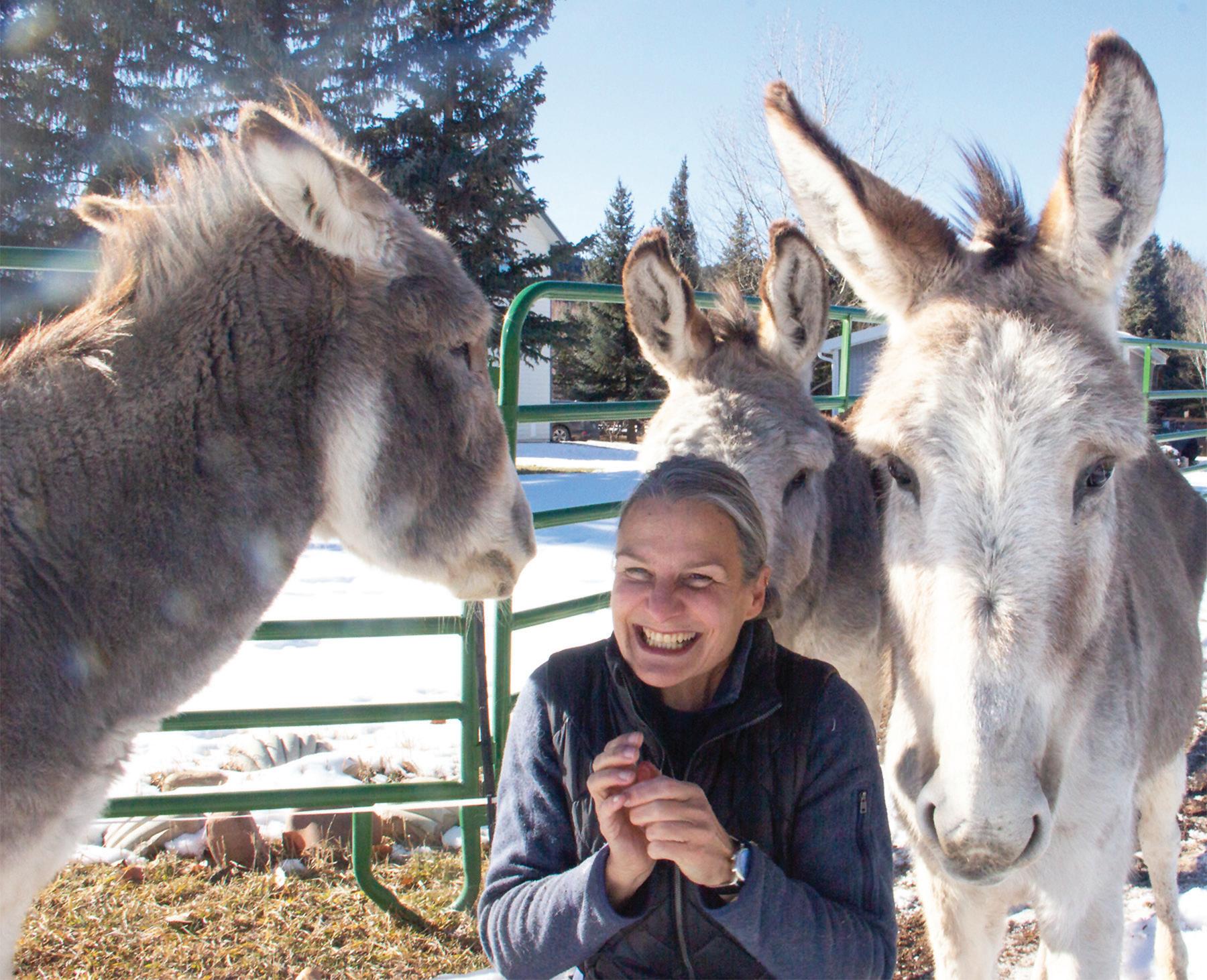
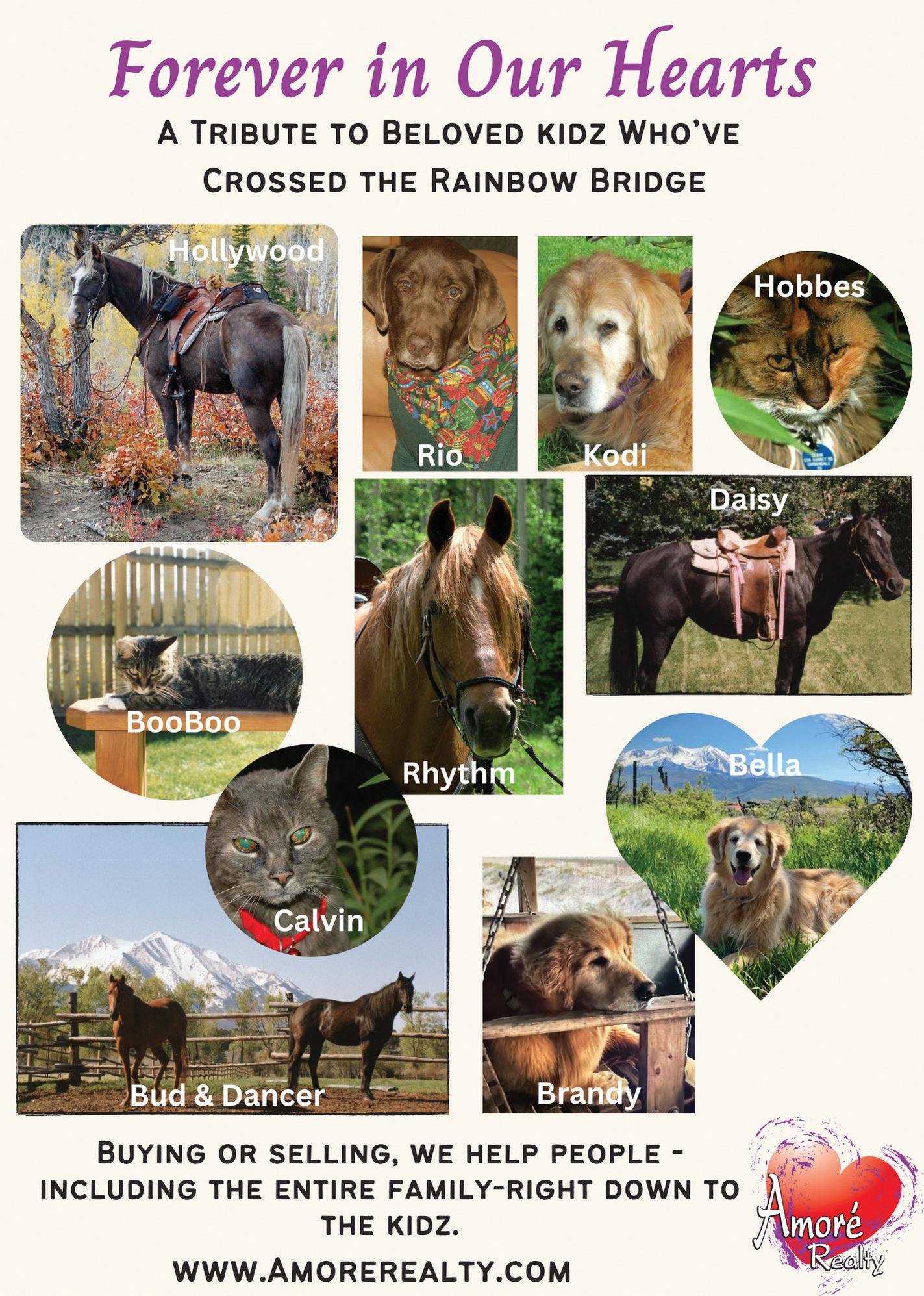

We all know the important role that diet and nutrition play in our health and longevity, and it goes without saying that this applies to our pets as well. As a veterinarian who treats non-traditional pets such as reptiles and birds, as well as dogs and cats, I see illnesses on a daily basis that are the direct effect of malnutrition. Feeding dogs and cats should be more straight forward, but is it really?
Pet parents are demanding premium products for their dogs and cats and the industry is responding. Consumer demand has fueled thousands of diets offering fresh, organic, grain-free, raw and other options with over $1 billion spent on pet food advertising in the Unites States alone last year. So how do we know which of these foods are best for our pets?
The problem lies partly in the limited regulation of pet foods and the often-misleading nature of pet food labels. There is no requirement that the food company has a veterinary nutritionist on staff, or that a nutritionist has even formulated the diet, or that any feeding trials have been conducted. In addition, pet foods may be labeled “veterinarian recommended” if only one veterinarian has endorsed the product.
The surge in pet food options containing novel ingredients, or excluding other ingredients based on consumer demand rather than science, has led to some serious health consequences. The most notable of these consequences is diet-related dilated cardiomyopathy (DCM) which is a progressive and often fatal heart disease. Research articles have been published on the topic, yet despite a huge research effort, 1,382 more cases in dogs, and 20 more cases in cats, have been reported to the FDA. Actual cases are likely much higher, as confirming this disease is expensive to the pet parent, and FDA reporting is time consuming to the veterinarian. While this feels
like old news, we are still seeing the preventable diet-associated form of this disease on a regular basis. There are many things we still do not know about diet-related DCM, but based on what we do know, it is recommended to avoid any diets containing peas, pea protein, lentils, chickpeas, potatoes or sweet potatoes unless a veterinary diet containing these ingredients has been prescribed by your veterinarian.
Another diet-related disease that is gaining awareness is an increased incidence of Copper Storage Disease in dogs. Certain breeds including Bedlington Terriers, Labrador Retrievers and Doberman Pinschers may have a genetic predisposition to this disease, but the disease is being seen in greater numbers since AAFCO recommended a change in the dietary source of copper in 1997 from copper oxide to the much more bioavailable form copper sulfate. Excess dietary copper accumulates in the liver, causing damage and liver disease. Dietary recommendations are currently based on minimum values and foods may contain much higher amounts. In addition, commercial diets are increasingly using organ meats and sweet potatoes, which also contain high copper levels. Unfortunately, copper levels cannot be determined by the pet food label. It is recommended to contact your pet food manufacturer to request they test foods for copper levels to influence a change in the current standard.
With these concerns related to commercial diets, homemade diets may be appealing, but it can be very difficult to consistently provide the appropriate calories, balance of protein, carbohydrates and fats and add necessary vitamins and minerals. Raw food diets may contain pathogens that are shed in the feces for an extended time after ingestion and may pose a health risk to other animals and family members. Working with a board-certified veterinary nutritionist is always recommended if feeding a homemade diet is desired.
While choosing what to feed our pets seems daunting, it is great that we do have options. Ask your veterinarian about nutrition and diet recommendations specific to your pet. As veterinarians, we want your pet to live a long and healthy life, too.

